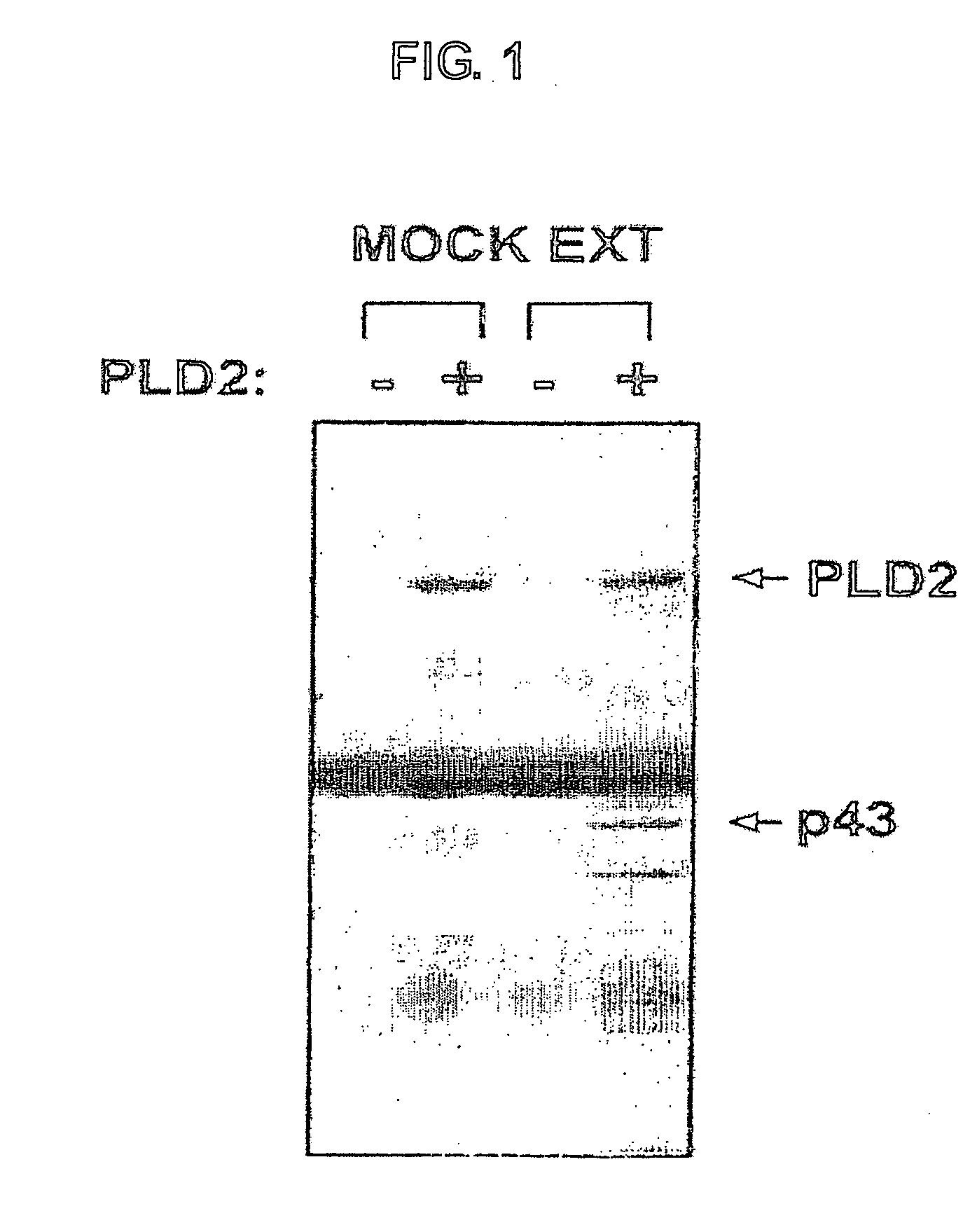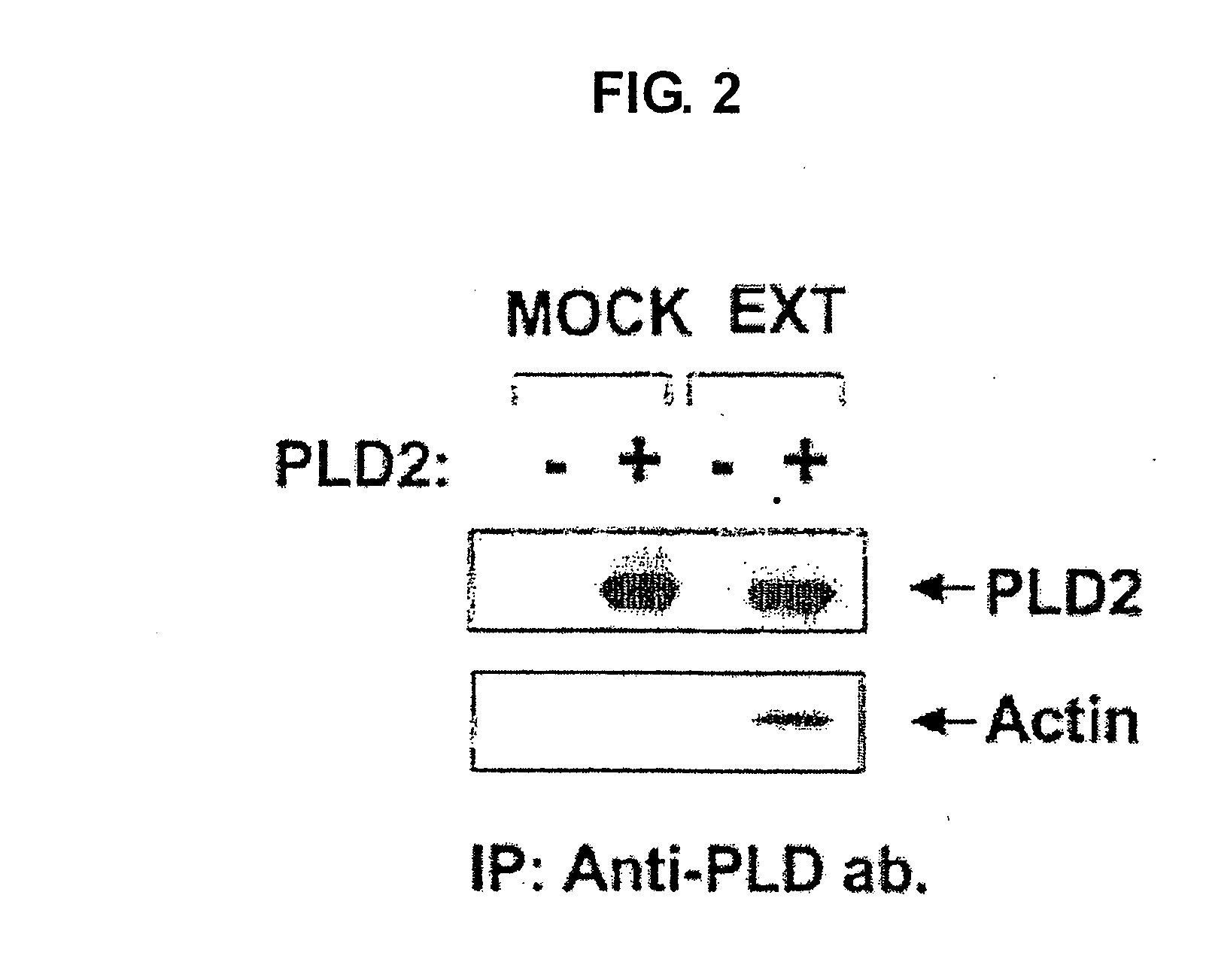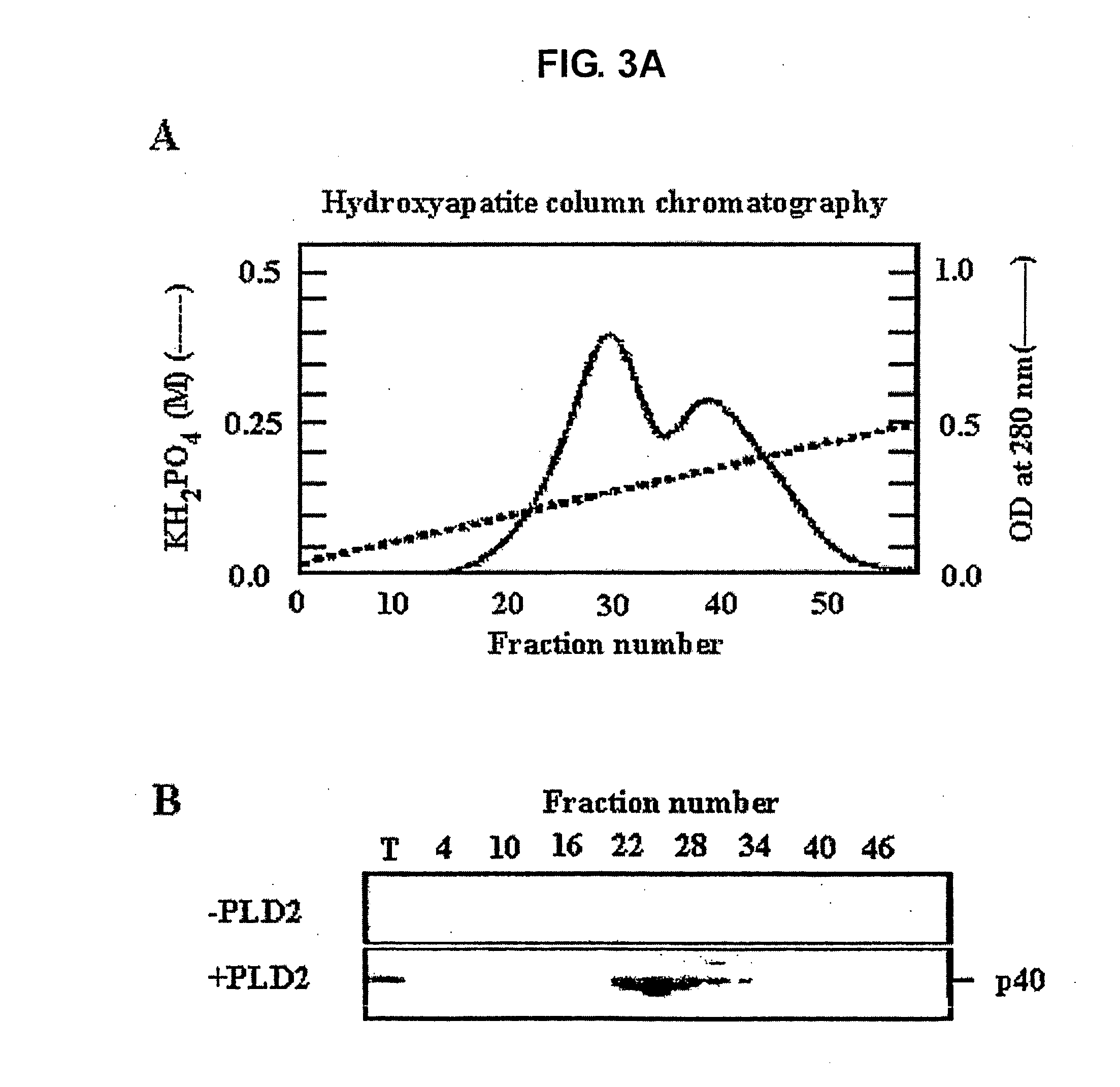Peptide complexes containing phospholipase d
a technology of phospholipase and complexes, which is applied in the field of isolated peptide complexes, can solve the problems of complex and tightly regulated process of phospholipase regulation
- Summary
- Abstract
- Description
- Claims
- Application Information
AI Technical Summary
Problems solved by technology
Method used
Image
Examples
example 1
Interaction between PLD2 and β-actin
[0106] (1) Co-Precipitation of PLD-2-Binding Proteins from Rat Brain Extracts
[0107] Hexa-histidine (His6)-tagged PLD2 was purified from detergent extracts of baculovirus-infected sf9 cells by chelating-Sepharose affinity column chromatography according to J. H. Kim et. al., FEBS Lett. 454, 42-46,1999. Rat brains (3 g) were homogenized in homogenation buffer (20 mM Tris / HCl, pH 7.5,1 mM MgCl2, 1 mM EDTA, 1 mM EGTA, and 150 mM NaCl) using a polytron homogenizer. After centrifugation at 100,000×g for 1 hour at 4° C., the resulting supernatant was used to investigate potential PLD2-binding partners. Protein concentrations in the brain extract were determined using the method according to M. M. Bradford, Anal. Biochem. 72, 248-254, 1976.
[0108] Affinity-purified anti-PLD antibodies immobilized on protein A resin (PLD antibody complex) were incubated with purified recombinant PLD2 (3 μg) for 2 hours. After a brief centrifugation, the immune complexes ...
example 2
Interaction between PLD2 and Aldolase
[0112] (1) 40 kDa Protein from Rat Brain was Detected as a PLD2-Direct Binder Using Blot Overlay Assay.
[0113] All preparations were performed at 4° C. or on ice. Adult rat brains (total 30 g) were homogenized using a polytron homogenizer in homogenation buffer containing 20 mM Tris, pH 7.6, 1 mM MgCl2, 1 mM PMSF, and 0.1 mM DTT. The homogenate was centrifuged at 100,000 g for 1 h and the resulting supernatant (the cytosolic fraction) was collected. The cytosolic fraction (900 mg) was loaded to a Q-Sepharose anion exchange column (13 cm×3 cm) pre-equilibrated with buffer A (20 mM Tris, pH 7.5, 1 mM EDTA, 1 mM EGTA, 1 mM MgCl2, and 0.1 mM DTT). Unbound proteins (flow-through fractions) were collected, and NaCl was added thereto to 2 M. After centrifugation (50,000g, 20 min), the resulting supernatant was loaded onto a Phenyl Sepharose column (70 cm×2 cm). Proteins were eluted at a flow rate of 2 mL / min by applying a decreasing gradient of NaCl (f...
example 3
Interaction between PLD2 and CRMP
[0117] (1) Identification of p62 as CRMP-2.
[0118] Purified PLD2-interacting protein from the hydroxylapatite column in Example 2 was digested for 2 h at 37° C. with V8 protease obtained from Staphylococcus aureus and then subjected to 15% SDS-PAGE to separate the cleaved peptides. After transferring the peptides to a polyvinylidene difluoride membrane, they were stained with Coomassie Brilliant Blue, rinsed several times with 30% methanol, excised, and subjected to Edman degradation. The candidate protein was identified by sequencing (ABI473 Sequencer) at the Institute of Basic Science (Busan, Korea) and by comparing the results obtained from the Swiss-Protein database using the BlastP algorithm. The masses obtained were compared with protein in the Swiss-Protein database using the MS-Fit peptide mass search program. The peptide exhibited molecular masses that were almost identical to the calculated masses of the corresponding theoretically predict...
PUM
| Property | Measurement | Unit |
|---|---|---|
| molecular weight | aaaaa | aaaaa |
| molecular weight | aaaaa | aaaaa |
| relative molecular weights | aaaaa | aaaaa |
Abstract
Description
Claims
Application Information
 Login to View More
Login to View More - R&D
- Intellectual Property
- Life Sciences
- Materials
- Tech Scout
- Unparalleled Data Quality
- Higher Quality Content
- 60% Fewer Hallucinations
Browse by: Latest US Patents, China's latest patents, Technical Efficacy Thesaurus, Application Domain, Technology Topic, Popular Technical Reports.
© 2025 PatSnap. All rights reserved.Legal|Privacy policy|Modern Slavery Act Transparency Statement|Sitemap|About US| Contact US: help@patsnap.com



